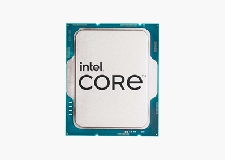Intel Unveils First Socketable SoC for Edge Innovation, Unlocking New Opportunities for Customers
12th Gen Intel Core SoC for the IoT edge empowers vertical markets with enhanced graphics capabilities, AI performance and flexibility.
LATEST NEWS: Intel announces the 12th Gen Intel® Core™ System-on-Chip (SoC) for the IoT Edge. A new family of purpose-built edge products optimized for IoT applications, this first-of-its-kind SoC provides high-performance integrated graphics and media processing for visual computing workloads. In addition, thanks to its compact footprint and operating thermal design power (TDP) for wide temperature operation, it can also help customers achieve smaller, innovative appearances and fanless cooling designs, and help them achieve product availability. sustainable goals.
"The digital transformation of enterprise business processes continues to accelerate, driven by labor demands, supply chain constraints, and changing consumer behaviors, increasing the volume of data generated at the edge," said Jeni Panhorst, vice president and general manager of Intel's Networking and Edge Computing Group. Explosive growth has led to an explosion in demand for on-premises processing and data analytics. Intel understands the challenges facing businesses across every vertical and is committed to helping them continue to deliver innovative use cases.”
Why it matters: Digital transformation at the edge requires increased processing power and AI inference performance for future-proof AI workloads. The 12th Gen Intel Core SoC for the IoT edge addresses these performance needs and increases implementation configurability and overall solution flexibility, enabling original equipment manufacturers (OEMs) and original design manufacturers (ODMs) to Quickly integrate and deliver solutions for a variety of vertical markets and specific edge use cases. In addition, the SoC features top-down management capabilities, including Intel vPro options for best-in-class remote control and management capabilities, critical for managing and maintaining systems deployed at the IoT edge .
About the 12th Gen Intel Core SoCs for the IoT Edge: Compared to the 12W/65W models in the 10th Gen Intel® Core™ desktop processor family, the 12th Gen Intel Core SoCs for the IoT edge can Provides up to 4 times the graphics processing speed1, and up to 6.6 times the GPU image classification inference performance2. It has a built-in Intel® Hardware Thread Director (Intel® Thread Director) that intelligently directs the operating system to assign the appropriate workload to the appropriate core. In addition, compared to 10th Gen Intel® Core™ desktop processors, this SoC has up to 14 cores and 20 threads, delivering up to 1.32x3 single-threaded performance and up to 1.27x4 multi-threaded performance.
The 12th Gen Intel Core SoC for the IoT edge also supports high-performance AI capabilities for inference and machine vision. Up to 96 EU graphics execution units enable high parallelization of AI workloads, and at the same time, the processor also uses Intel® Deep Learning Boost (Intel® DL Boost), and through the built-in AI acceleration function on the CPU to provide additional inference performance. In addition, the processor fully supports Intel® Distribution of OpenVINO™ (Intel® Distribution of OpenVINO™) toolkit optimization and cross-architecture inference.
"By combining a CPU with high-performance integrated graphics, enhanced visual computing and AI capabilities into a compact processing configuration, the 12th Gen Intel Core SoCs for the IoT edge can help customers unlock new opportunities - —From customized retail outlet solutions to precise imaging and pattern recognition to improve medical diagnosis.”
12th Gen Intel Core SoCs for the IoT Edge can benefit a variety of industries:
• Customers in retail, banking, hospitality, and education will be able to extend the remote control and management capabilities of edge systems, increase the value of touchless point-of-sale, and respond quickly to changing supply and demand conditions.
• Customers in industrial manufacturing can better utilize industrial PCs, edge servers, advanced controllers, machine vision systems and virtualized control platforms.
• Medical customers will be able to offer enhanced ultrasound imaging capabilities, medical carts, endoscopy capabilities and clinical equipment at the edge.
illustrate:
Performance varies by usage, configuration, and other factors, see Intel.com/PerformanceIndex for more information.
1. According to the measurement results of 3DMark - Fire Strike - Graphics Score, the graphics processing performance is improved by up to 4 times;
2. According to MLPerf v1.1 ResNet50 - Offline - int8 - GPU and MLPerf™ Inference Edge v1.1 Inference ResNet-v1.5 measurement results show up to 6.6x improvement in GPU image classification inference performance; results not verified by MLCommons™ Consortium . The MLPerf name and logo are trademarks of the MLCommons Association in the United States and other countries, all rights reserved, and unauthorized use is strictly prohibited.
3. Using the InteI Compiler 2021.2 version, measured by SPECrate2017_int_base (1-copy), the single-thread performance is improved by up to 1.32 times;
4. Using the InteI Compiler 2021.2 version, measured by SPECrate2017_int_base (n-copy), the multi-threading performance is improved by up to 1.27 times.

